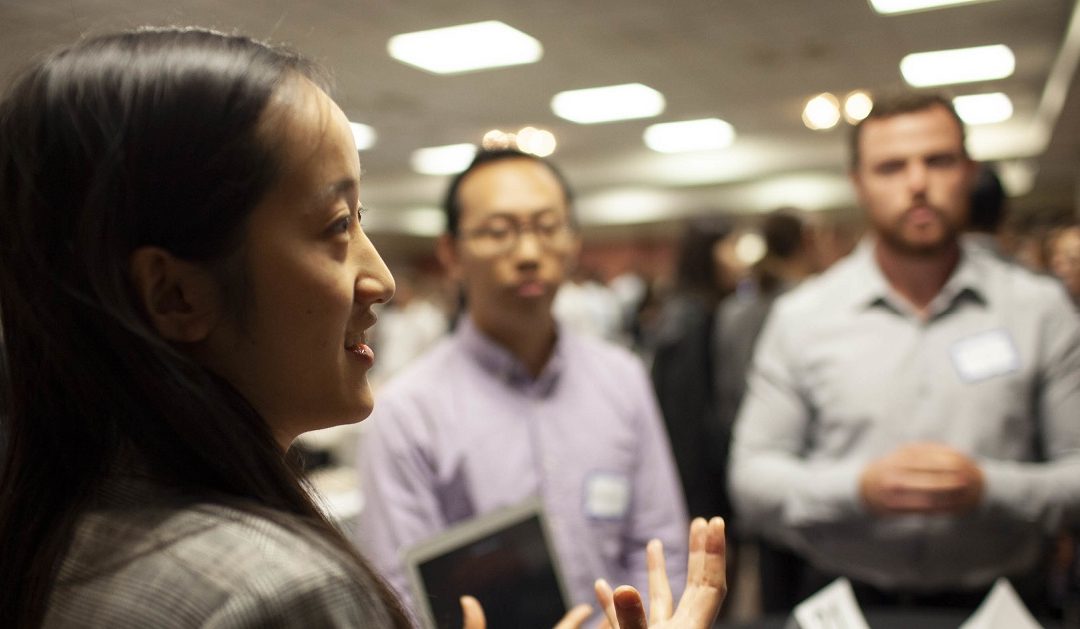By Hanna Kim, Gustavson External Relations Co-op Student
In the midst of this September’s world-wide climate strike and its passion, all third-year BCom students gathered for Gustavson’s annual Mission Impossible challenge to tackle global environmental issues using their creativity and problem solving skills.
Each team, made up of several Canadian BCom students and at least one incoming exchange student, came up with a unique business idea that could address current environmental concerns in their exchange student’s country of origin. As an international student myself, I was fascinated to see students from different countries and cultures work together to confront challenges that occur outside of Canada.
By the end of the day, many innovative ideas were presented, but two teams in particular caught my interest.
Team 49: their project was called the “GreenWall.” Their exchange student was from Germany, where air and noise pollution remains a huge problem. As a possible solution, the team suggested using moss blocks as insulating materials for commercial and residential building walls, which would theoretically absorb air pollution and block noises. According to the team, moss absorbs massive amounts of CO2 and doesn’t need much soil or water to survive, meaning the upkeep would be relatively simple. The company would regularly provide the maintenance services. Another benefit is that the “GreenWall,” as its name implies, would provide the feeling of being in nature in one’s own house. In addition, the team claimed that the “GreenWall” fits in with Germany’s culture, which supports eco-development and values nature. This idea grabbed my attention, as I am originally from South Korea where, just like Germany, air and noise pollution is a serious issue that needs to be addressed. Listening to the students present the “GreenWall” made me hopeful for the day that ideas like this could become the reality and create a better environment, even in urban areas.
Some other students decided to jump into the food industry, such as Team 50, whose project was called “The Brewed Loaf.” Their exchange student was from Vienna, Austria. This team decided to address the enormous amount of spent grains that go to waste in local breweries in Austria. Spent grains make up around 85 per cent of the waste from beer production. “The Brewed Loaf” would attempt to produce bread from these grains, which would otherwise go to waste. According to the team, spent grains have high nutritional values compared to regular grains, including high fiber content in less calories. Since bread is a staple food in Austria, and its society is becoming more and more health conscious, “The Brewed Loaf” would market its product through emphasizing the nutritional benefits. Also, the cost for obtaining spent grains from breweries is expected to be very low, since breweries are currently spending money to dispose of spent grains.
When we think of environmental issues around the world, we often assume that it would be hard to make significant changes as an individual – and that is partially true. Alone, it would be difficult to make a noticeable positive impact on our environment. However, as the Mission Impossible challenge demonstrated, when teamwork, creativity, and innovative thinking are involved, a single idea can turn into technologies and businesses that can potentially make a real difference – and inspire others.


